![]()
Sun, Dec 11, 2011
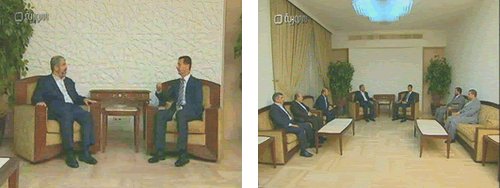
Halcyon days of Hamas-Syrian relations: Khaled Mashaal, head of the Hamas political bureau, and bureau members, with Syrian President Bashar Assad (Syrian TV, January 9, 2010).
Hamas evacuates its Syrian external headquarters
This Bulletin is originally published by The Meir Amit Intelligence and Terrorism Information Center.
Overview
In view of the instability of Bashar Assad’s regime, Hamas has begun evacuating its Syrian external headquarters. According to media reports, most of Hamas’ activists have already left Syria. Reuters reported that the Hamas headquarters in Damascus, where hundreds of activists were previously stationed, is now staffed by a few dozen, and the evacuation was accelerated after the Arab League announced the imposition of sanctions on Syria. According to Reuters, although Hamas owes Syria a great deal, it does not want to find itself on “the wrong side of pan-Arab public opinion” (Reuters, December 4, 2011).
The Arabic newspaper Al-Hayat reported that most of the Hamas activists from the Gaza Strip had returned to the Gaza Strip, while others had left for Turkey, Lebanon and Qatar. According to the report, all the military operatives had left Syria and only a handful of political leaders were left (Al-Hayat, December 6, 2011). A “senior Hamas security official,” who relocated from Damascus to the Gaza Strip, told a Wall Street Journal correspondent that during the last few months Hamas had divested itself of its Syrian assets, including business investments, real estate and bank deposits (Wall Street Journal, December 7, 2011).
It is not clear in which country (or countries) Hamas will locate its headquarters after it leaves Damascus. According to the media, Hamas is currently examining options such as Egypt, Qatar, Sudan and Jordan (the visits of Khaled Mashaal, head of Hamas’ political bureau, to Egypt and Sudan, and his planned visit to Jordan, might be related).
Behind Hamas’ exodus from Syria are the movement leadership’s increasing embarrassment and confusion regarding Damascus. In recent months Hamas has found itself between a rock and a hard place, having to balance the movement’s interests, its ideological identity and worsening external pressures:
- On the one hand, Hamas is part of the “resistance axis” (i.e., countries and organizations which support terrorism) and is in need of Syrian and Iranian support. The leadership, headed by Khaled Mashaal, has operated in Damascus since 1998-1999 with the permission and oversight of the Syrian regime. The headquarters in Damascus direct Hamas’ activities in the Gaza Strip and elsewhere, and it receives extensive, diverse military support from Syria and Iran.
- On the other hand, as Bashar Assad’s regime has weakened, especially in recent months, it has become increasingly difficult for Hamas to continue operating in Damascus and being affiliated with the Syrian regime. That is particularly true in view of Assad’s growing isolation in the Arab world, and his strong suppression of the popular protests. Moreover, the protesters have publicly supported the Muslim Brotherhood, Hamas’ parent movement, and Sheikh Yusuf al-Qardawi, the source of its religious-ideological authority.[1]
According to media reports, Hamas headquarters in Damascus was emptied gradually in an attempt not to alienate the Syrian regime to an extreme degree. Hamas’ embarrassment and confusion have been manifested in remarks made by high-ranking figures, who have spent the past few months repeatedly denying the movement was leaving Syria. For example, Izzat al-Rishq, a member of Hamas’ political bureau, called the news reports about the Hamas exodus “baseless lies,” saying that no changes had been made in the Hamas staff in Syria (The PIJ’s Paltoday website, December 5, 2011). He also said that all the high-ranking and political bureau members and their families were still in Syria. He claimed Hamas had no intention of closing its offices in Damascus and that it would not abandon Syria “when it [was] in trouble” (Al-Quds Al-Arabi, December 7, 2011). Hamas spokesman Fawzi Barhoum said that Hamas was operating in Syria as usual and not looking for an alternative location for its political bureau. He said that all reports to the contrary were “wasted efforts” to cause tension between Hamas and Syria (Alresalah.net website, December 5, 2011).
Initial assessment of evacuating Hamas headquarters in Damascus
Evacuating Hamas’ external headquarters from Damascus 13 years after it was moved there from Jordan, is, in our assessment, a watershed event in the history of the Hamas movement and liable to have repercussions in the internal Palestinian arena and the Israeli-Palestinian conflict. Initially, it is a result of the worsening situation of Bashar Assad’s regime and regional fluctuations in general. In our assessment, the recent dramatic developments in Syria make it necessary for the Syrian-sponsored terrorist organizations, among them Hamas and Hezbollah, to reexamine their relations with Bashar Assad’s regime after years of activity under a Syrian-Iranian aegis.
Assuming that the Syrian chapter in Hamas history is about to end (at least in its present form) various outcomes are, in our assessment, possible:
- The weakening of the external leadership: Leaving Damascus may influence Hamas’ internal balance of power, especially the delicate balance between the external leadership (headed by Khaled Mashaal) and the military-political leadership (headed by Ismail Haniya and Izz al-Din al-Qassam Brigades commander Ahmed Jaabari) in the Gaza Strip. In the past the two leaderships have had differences of opinion and there has been tension between them, both for personal reasons and because of different views of Hamas policy. In the near future the abandoning of Damascus may weaken the external leadership and strengthen the leadership in the Gaza Strip, more liable as it is to be influenced by restraining governmental considerations, for example imposing the lull in the fighting with Israel.
- The weakening of Hamas in the internal Palestinian arena: The loss of the Syrian stronghold may, at least for a short time, hurt Hamas’ ability to carry out day to day activities. It may also increase the tension and suspicion between Hamas on the one hand and Syria and Iran on the other. Therefore, that may make Hamas seem weak (at least temporarily) and give Mahmoud Abbas a shot in the arm, resulting in an internal standoff. It may also have consequences for the Fatah-Hamas reconciliation and the planned elections, an outcome of Mahmoud Abbas’ greater self confidence in everything related to his internal Palestinian stand and the conflict with Israel.
- Harm, at least temporarily, the operational terrorist apparatuses: For many years the Hamas headquarters in Damascus served as a focal point for the ongoing direction of terrorism and violence in the territories (including during the second intifada). The direction was manifested, among other ways, by giving instructions to Hamas operatives in the territories and funneling money into the networks, arranging military training for operatives and transferring weapons. It can be assumed that leaving Syria will harm the functioning of Hamas operatives outside the Gaza Strip until their activities have been reinstated in an Arab country or countries willing to accept them. At the same time, relocating operatives to different countries may increase their capabilities to receive financial, operational and perhaps political support from them.
- Harm to Hamas’ relations with the “resistance axis:” By virtue of the fact that Hamas’ operational, political and propaganda facilities are located in Syria, to a great extent it is dependent on the Syrian regime and indirectly also on Iran, its strategic ally. The exodus of Hamas headquarters may challenge its relations with the “resistance axis” and weaken its dependence on Syria and Iran,[2] although not completely (for example, Hamas will still need a channel to transfer weapons from Iran into the Gaza Strip and Iran may still basically want to help Hamas after adapting to the new conditions because of its own regional interests). On the other hand, relations between Hamas and the Sunni Muslim Arab states (the rivals of the “resistance axis”) may become closer, especially Egypt, where the Muslim Brotherhood, Hamas’ parent movement, has become a powerful political force.
- An indication of the instability of Bashar Assad’s regime: The exodus from Damascus by Hamas, the most important Palestinian movement, is another indication of the undermining of Assad’s regime as the rebellion gains strength. As far as the Syrian regime is concerned, the Hamas exodus leaves it without one of its most important sources of leverage against Israel. (encouraging terrorism, sabotaging the peace process and preventing the lull in the fighting in the Gaza Strip). On the other hand, the weakening of the Assad regime requires that the terrorist organizations allied to Syria, especially Hamas and Hezbollah, reconsider their positions and carry out the necessary adaptions in view of the growing danger of having their vital interests in Syria damaged (and they may be wondering about the morning after…)
Appendix
The Hamas Movement before it Left Damascus[3]
Notes on the structure of the Hamas movement:
1) The General Shura Council: Hamas’ supreme source of authority.
2) The Hamas leadership in Damascus: The external overall leadership of the Hamas movement and traditionally the center of gravity. The chairman of the political bureau is Khaled Mashaal, the top Hamas personality. The political bureau in Damascus maintains permanent, close relations with the leadership in General Assembly, Judea and Samaria, and with representatives in other countries (Iran, for example). The leadership in Damascus plays an important role in coordinating between Syria and Iran, in directing terrorism and in transferring aid and support to Hamas operatives in the territories (for example military training, weapons, funds and operational know-how).
3) The Hamas movement leadership in the Gaza Strip: The Gazan leadership determines Hamas policy in the Strip, including policy of terrorism, in consultation with the Izz al-Din al-Qassam Brigades (Hamas’ military-terrorist wing) and the leadership in Damascus. It is headed by Ismail Haniya. The leadership coordinates and directs Hamas activity in the various districts of the Gaza Strip.
4) The Izz al-Din al-Qassam Brigades in the Gaza Strip: The Brigades deal with directing the fighting against Israel, promoting the military buildup and in time of need enforcing Hamas control on the ground and suppressing opposition. It is headed by Ahmed Jaabari. The Brigades’ leadership commands the brigades and battalions throughout the Gaza Strip. It maintains close contact with the Hamas leadership in the Gaza Strip and Damascus.
5) The de-facto Hamas administration in the Gaza Strip: The administration is a political-security body headed by Ismail Haniya with the participation of other senior figures. It implements Hamas policies, is an important tool in controlling the Gaza Strip and is a dominant factor in Hamas consideration. In effect it governs the Gazans’ daily lives. Ismail Haniya, the so-called “prime minister,” is involved not only in political and administrative activities, but also in directing the Izz al-Din al-Qassam Brigades and in enforcing Hamas policies using using the interior and national security ministry.
6) The internal security services: The internal security services are responsible for implementing the internal security policies of the de facto Hamas administration in the Gaza Strip and controlling internal affairs in the Gaza Strip. They are responsible for suppressing opposition, deal with the population, implement Hamas’ policy of Islamization and maintain public order. They are subordinate to the interior and national security ministry (the current minister is Fathi Hamad and until Operation Cast Lead, Sayid Siyam). The internal security forces are an integral part of Hamas’ combat array and maintain close cooperation with the Izz al-Din al-Qassam Brigades in terrorist activities, as was clearly manifested during Operation Cast Lead.
Notes:
[1] For further information see the April 17, 2011 article by ITIC.
[2] A “senior Hamas security official” who recently moved from Damascus to the Gaza Strip said that leaving Syria distanced Hamas from Iran. He added that Iran provided Hamas with money, training and military hardware, and in recent months had urged Hamas not to move its headquarters (Wall Street Journal, December 7, 2011).
[3] Based on the March 2010 bulletin by ITIC.



 RSS
RSS

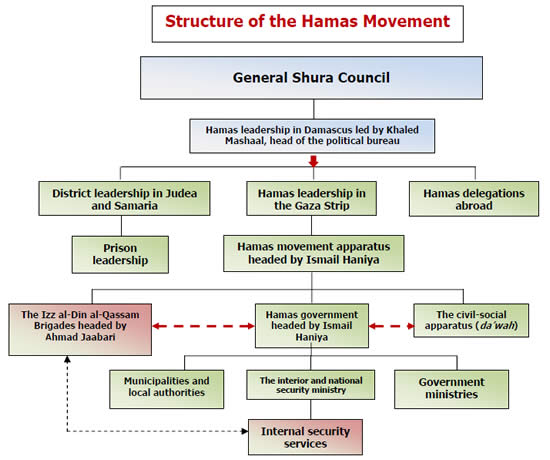
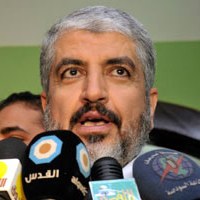

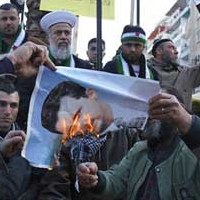
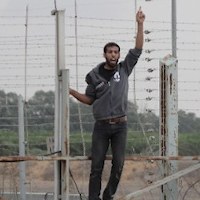





Hamas evacuates its Syrian external headquarters | Middle East, Israel, Arab World, Southwest Asia,. http://t.co/A0TExbzE
Hamas evacuates its Syrian external headquarters | Middle East, Israel, Arab World, Southwest Asia,. http://t.co/A0TExbzE